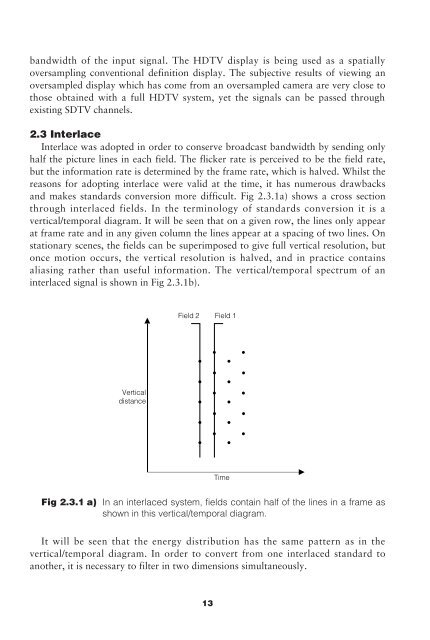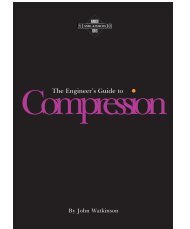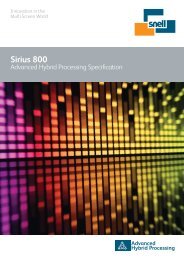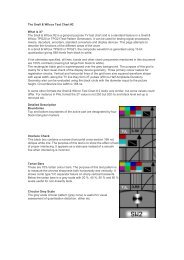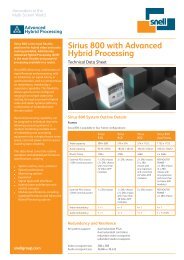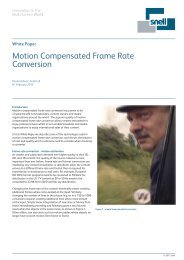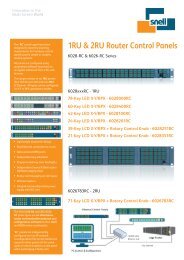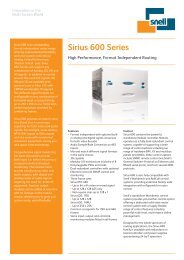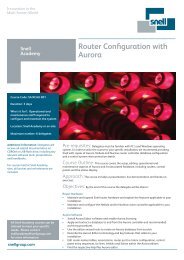The Engineer's Guide to Standards Conversion - Snell
The Engineer's Guide to Standards Conversion - Snell
The Engineer's Guide to Standards Conversion - Snell
You also want an ePaper? Increase the reach of your titles
YUMPU automatically turns print PDFs into web optimized ePapers that Google loves.
andwidth of the input signal. <strong>The</strong> HDTV display is being used as a spatially<br />
oversampling conventional definition display. <strong>The</strong> subjective results of viewing an<br />
oversampled display which has come from an oversampled camera are very close <strong>to</strong><br />
those obtained with a full HDTV system, yet the signals can be passed through<br />
existing SDTV channels.<br />
2.3 Interlace<br />
Interlace was adopted in order <strong>to</strong> conserve broadcast bandwidth by sending only<br />
half the picture lines in each field. <strong>The</strong> flicker rate is perceived <strong>to</strong> be the field rate,<br />
but the information rate is determined by the frame rate, which is halved. Whilst the<br />
reasons for adopting interlace were valid at the time, it has numerous drawbacks<br />
and makes standards conversion more difficult. Fig 2.3.1a) shows a cross section<br />
through interlaced fields. In the terminology of standards conversion it is a<br />
vertical/temporal diagram. It will be seen that on a given row, the lines only appear<br />
at frame rate and in any given column the lines appear at a spacing of two lines. On<br />
stationary scenes, the fields can be superimposed <strong>to</strong> give full vertical resolution, but<br />
once motion occurs, the vertical resolution is halved, and in practice contains<br />
aliasing rather than useful information. <strong>The</strong> vertical/temporal spectrum of an<br />
interlaced signal is shown in Fig 2.3.1b).<br />
Field 2 Field 1<br />
Vertical<br />
distance<br />
Time<br />
Fig 2.3.1 a) In an interlaced system, fields contain half of the lines in a frame as<br />
shown in this vertical/temporal diagram.<br />
It will be seen that the energy distribution has the same pattern as in the<br />
vertical/temporal diagram. In order <strong>to</strong> convert from one interlaced standard <strong>to</strong><br />
another, it is necessary <strong>to</strong> filter in two dimensions simultaneously.<br />
13


